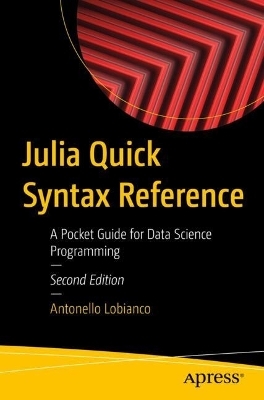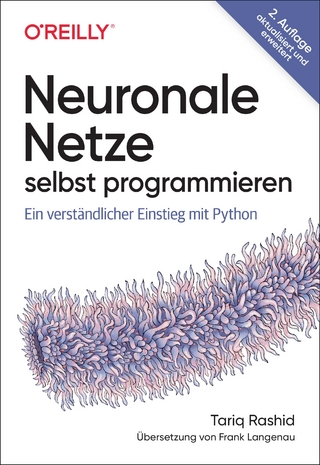
Julia Quick Syntax Reference
Apress (Verlag)
9798868809644 (ISBN)
This book provides an introduction that reveals basic Julia structures and syntax; discusses data types, control flow, functions, input/output, exceptions, metaprogramming, performance, and more. Additionally, you'll learn to interface Julia with other programming languages such as R for statistics or Python. At a more applied level, you will learn how to use Julia packages for data analysis, numerical optimization, symbolic computation, and machine learning, and how to present your results in dynamic documents.
The Second Edition delves deeper into modules, environments, and parallelism in Julia. It covers random numbers, reproducibility in stochastic computations, and adds a section on probabilistic analysis. Finally, it provides forward-thinking introductions to AI and machine learning workflows using BetaML, including regression, classification, clustering, and more, with practical exercises and solutions for self-learners.
What You Will Learn
Work with Julia types and the different containers for rapid development
Use vectorized, classical loop-based code, logical operators, and blocks
Explore Julia functions: arguments, return values, polymorphism, parameters, anonymous functions, and broadcasts
Build custom structures in Julia
Use C/C++, Python or R libraries in Julia and embed Julia in other code.
Optimize performance with GPU programming, profiling and more.
Manage, prepare, analyse and visualise your data with DataFrames and Plots
Implement complete ML workflows with BetaML, from data coding to model evaluation, and more.
Who This Book Is For
Experienced programmers who are new to Julia, as well as data scientists who want to improve their analysis or try out machine learning algorithms with Julia.
Antonello Lobianco, PhD is a research engineer employed by a French Grande É cole (polytechnic university). He works on the biophysical and economic modelling of the forest sector and is responsible for the lab models portfolio. He does programming in C++, Perl, PHP, Visual Basic, Python, and Julia. He teaches environmental and forest economics at undergraduate and graduate levels and modelling at PhD level. For a few years, he has followed the development of Julia as it fits his modelling needs. He is the author of a few Julia packages, particularly on data analysis and machine learning (search sylvaticus on GitHub).
Part 1. Language Core.- 1. Getting Started.- 2. Data Types and Structures.- 3. Control Flow and Functions.- 4. Custom Types.- E1: Shelling Segregation Model - 5. Input – Output.- 6. Metaprogramming and Macros.- 7. Interfacing Julia with Other Languages.- 8. Efficiently Write Efficient Code. - 9 Parallel Computing in Julia - Part 2. Packages Ecosystem.- 10. Working with Data.- 11. Scientific Libraries.- E2: Fitting a forest growth model - 12 – AI with Julia – E3. Predict house values - 13. Utilities. Appendix: Solutions to the exercises.
| Erscheinungsdatum | 08.01.2025 |
|---|---|
| Zusatzinfo | 83 Illustrations, black and white |
| Verlagsort | Berkley |
| Sprache | englisch |
| Maße | 155 x 235 mm |
| Themenwelt | Informatik ► Datenbanken ► Data Warehouse / Data Mining |
| Mathematik / Informatik ► Informatik ► Programmiersprachen / -werkzeuge | |
| Informatik ► Theorie / Studium ► Compilerbau | |
| Informatik ► Theorie / Studium ► Künstliche Intelligenz / Robotik | |
| ISBN-13 | 9798868809644 / 9798868809644 |
| Zustand | Neuware |
| Informationen gemäß Produktsicherheitsverordnung (GPSR) | |
| Haben Sie eine Frage zum Produkt? |
aus dem Bereich


